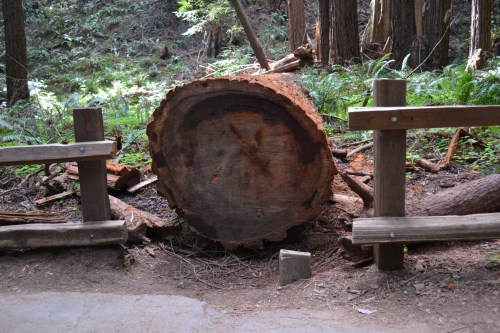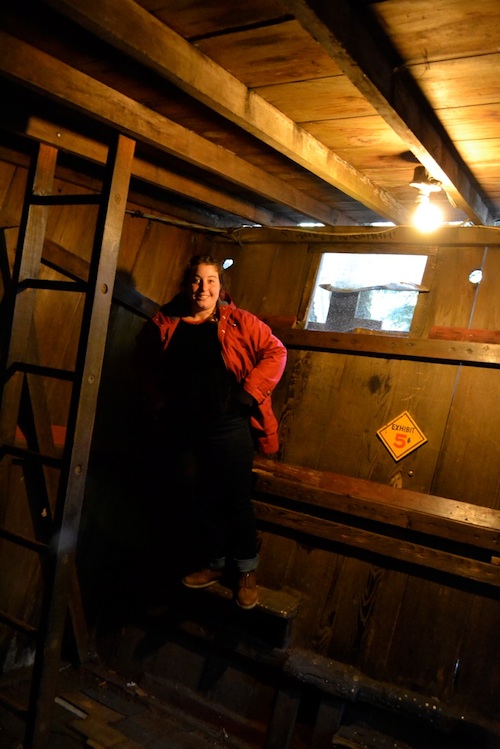What if you could do something simple that involved beauty and fun, didn’t cost a thing, and improved every aspect of your and your family’s health and well-being? That something is as simple as visiting your neighborhood or other park, woods, seashore or other favorite outdoor spot.
That’s why National Park Trust has designated Saturday, May 16, Kids to Parks Day. By setting aside one Saturday in mid-spring, NPT hopes to raise awareness of the ease and benefits of visiting a park and foster a connection with our public lands that will lead to lifelong enjoyment and stewardship.
Take the Kids to Parks Day pledge to bring a child to a park on May 16. Everyone who registers will be entered to win a Nikon COOLPIX L830 camera!
What do you do when you get to the park? That part is easy! Here are 12 Great Activities for Kids to Parks Day.
Make a Paper or Cork Boat and Sail it in a Creek
My family first got the idea to make a paper boat from our beloved book, H.A. Rey’s Curious George Rides a Bike, in which sweet and loveable George secures a paper route, which leads him to make and sail a whole flotilla of folded-newspaper boats. Wondering if a newspaper boat could really float, we got out some old newspaper, folded it into boats using the directions in Curious George, and took our boats down to a local creek, where they indeed sailed along once released, on a gently flowing spring stream. You can make your own boat, using any kind of paper. Sail it or race it with others!
Got corks on hand? Make and enjoy a cork raft or cork sailboat.
Blow Bubbles
Bubble blowing may be one of life’s perfect activities. Yes, they provide endless possibilities and inexpensive fun, but bubbles–each a thin skin of liquid surrounding a gas–sneakily illustrate a little science, too. Read about bubble science here. Perhaps best of all, bubbles can be made using ingredients you probably have around the house. Take a bucket of mix to a park or lawn and enjoy one of life’s simple pleasures. Here’s a recipe for giant homemade bubbles and some fun bubble activities.
Play Pick-Up Sticks with Real Twigs
It’s called Spillikans in Canada, Plockepinn in Sweden, Mikado throughout Europe, and Kau Cim in China, where the sticks were used as a fortune-telling device. Although you could buy a canister of pick-up sticks at a toy or variety store, why not collect your own, at the park, for free? As a bonus, you’ll have fun hunting for good sticks, as well as playing with them. Here are directions for Pick-Up Sticks.
Cook with the Sun
Box ovens employ one of the oldest energy sources of all, solar power. French-Swiss scientist Horace de Saussure was the first to harness the sun for cooking. He used glass to trap heat and create convection while his 1700s peers were still burning mirrors. Anything that can be cooked in a regular oven can be cooked in a box oven. We like to make cupcakes, biscuits, English muffin pizzas, and other items that don’t require long cooking times. Try one of our favorites, Box Oven Pineapple Upside Down Cake.
Learn more about how to make a box oven and cook with the sun.
Whistle with a Blade of Grass
Parks are the perfect place to let time move a little more slowly than usual. Try your hand at some outdoor activities from a slower time that need only the equipment on hand and a little practice. Even, and perhaps especially, a modern child will enjoy the chance to whistle with a blade of grass, make a daisy chain, or skip a stone in a body of water.
Have a Scavenger Hunt or Make a Nature Bracelet
Whether you’re looking for wildflowers with five petals, red birds, or heart-shaped rocks, scavenger hunts get people of all ages exploring and observing in nature.
Nature bracelets also prove that simple is often best outdoors. Making them is a fun and easy way to get kids to look around them and observe small items. Like scavenger hunts, the hunt for nature bracelet items turns an outing into an adventure.
Gaze at the Stars
Outdoor fun needn’t only happen during the daytime. The nighttime offers lots of opportunities to explore constellations of stars and exciting events like meteor showers, which happen often throughout the year. Many parks offer nighttime interpretive programs, and some U.S. national parks have been designated dark-sky parks, because of their excellent star-gazing conditions and educational opportunities.
You can’t help but be infused with a sense of wonder, awe, history and mystery while contemplating the cosmos, as countless people, back to the ancient Babylonians, Egyptians, Greeks and others have done before us.
Play Web of Life
This powerful group game teaches older children about the interconnectedness of living things. We encountered it on a school field trip to a vibrant marsh and have never forgotten it. Learn the rules to Web of Life.
Create Flower Fashions
The earliest May Day celebrations commemorated Flora, the Roman goddess of flowers and spring. Celebrate the spirit of Flora on May Day, Summer Solstice, Kids to Parks Day, or any time, by making lovely floral wreaths, crowns and baskets with materials found in a park or woods.
Finger Weave
Bring your art to the park! Finger weaving is especially portable. Every year, at our annual Girl Scout Camporee weekend, this simple, tactile craft occupied girls of all ages, who wove, chatted, and relaxed in nature.
Make S’Mores
If there’s a barbeque handy, consider firing it up and making everyone’s favorite camping treat, s’mores. The gooey creation has been pleasing people in parks since the first recipe was published in the 1927 Girl Scout handbook, Tramping and Trailing with the Girl Scouts.
Play Classic Outdoor Games
When’s the last time you got a group together in a park for some old-fashioned playground or lawn games? Kids to Parks Day, or any day, is a great time to revive your favorites or learn something new. Games such as Red Light, Green Light, Duck Duck Goose, Mother/Father May I, Capture the Flag, Kick the Can, and the ever-popular Tag, in all its variations have been entertaining people around the world for decades. Here are the rules to these and other classic outdoor games. Try one in a park!
Register for Kids to Parks Day & Enter the Buddy Bison Prize Pack Giveaway.
In addition to taking the Kids to Parks Day pledge to bring a child to a park on May 16, you can enter my giveaway to receive a Buddy Bison Prize Pack.
The prize package consists of a “Buddy Bison” mascot stuffed animal, 2 National Geographic Books (National Geographic Secrets of the National Parks and National Geographic Kids National Parks Guide U.S.A.), a CamelBak BPA- and BPS-free reusable bottle, a T-shirt, and a NPT Park Activity Guide ($75 value.)
To enter, take the the Kids to Parks Day pledge and then leave a comment on this post, letting me know you took the pledge and sharing your favorite park activity by Friday, May 15, Midnight, PDT. The giveaway winner will be chosen by random name generator and notified by email. The giveaway winner must respond within 48 hours of receiving the email to receive the prize.
Update: Laura has won the giveaway and claimed her prize. Thank you all for participating. Hope you enjoy your outdoor time.
Still looking for more park activities? Download National Park Trust’s Park Activity Guide. Have fun this spring in a park!
These activities are adapted from Fed Up with Frenzy: Slow Parenting in a Fast-Moving World, which contains 300+ more fun family activities.
Photos: Susan Sachs Lipman, Public Domain (grass, night sky, web of life), Pass the Cereal (nature bracelet), Virginia State Parks (classic games)
Other Slow Family posts you might like:
National Day of Service at our National Park
Ken Burns’ The National Parks on PBS
Camping Trip: California’s El Dorado National Forest
A Neighborhood Walk Turns into a Hike to Muir Woods






























































































































